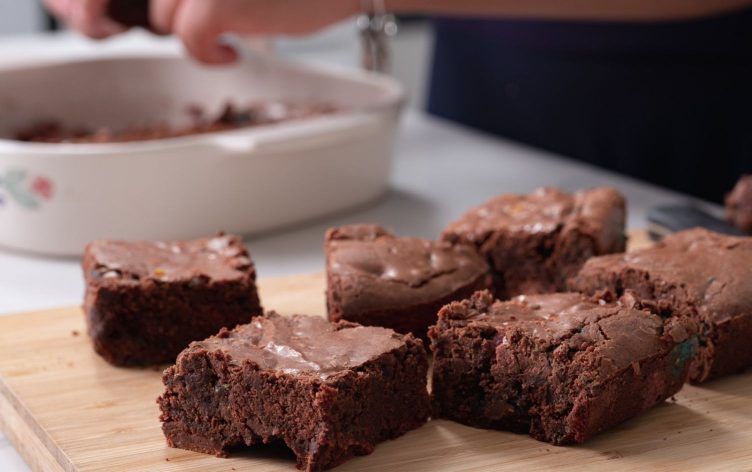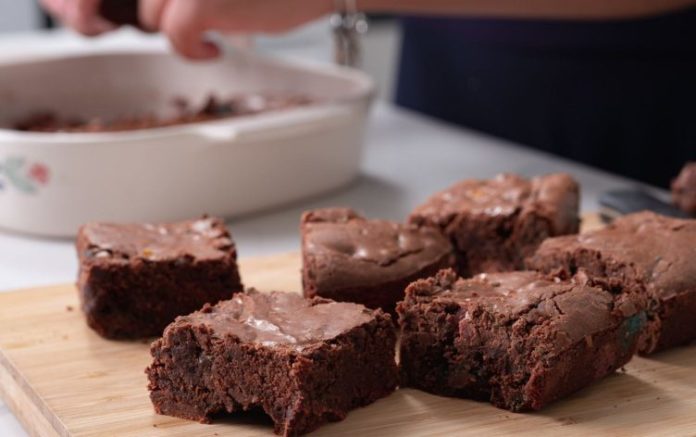
If you’ve read anything I’ve written here before, you may know that I live and practice under the philosophy that baked goods of all kinds can be “healthy” for you in a given moment, and no foods should be off-limits. That said, I am constantly asked how I think at-home baking can be “healthified” or improved without sacrificing taste. This is no easy task — I’ve made many flavorless quick breads and cookies after going overboard with “healthy” ingredients. Through trial and error, I’ve developed a few fail-safe strategies that help strike a balance between flavor and good for you ingredients.
CLICK TO TWEET THIS ARTICLE > Before you bake up some seasonal treats, check out these baking hacks to lighten up some of your favorite recipes! via @MyFitnessPal #myfitnesspal
PUREED PUMPKIN
Pumpkin puree can be used as a substitute for a fat, like butter or oil, in a 1:1 ratio. This means if a recipe calls for 1 cup of oil, you can substitute it for 1 cup of pumpkin. Pumpkin puree is a great baking ingredient because it has a hint of sweetness and a ton of moisture. It’s awesome for quick breads, muffins and even cookies. I usually substitute it for half the amount of butter or oil, for example 1/2 cup of pumpkin and 1/2 cup of butter for a recipe that calls for 1 cup of butter. This way, you can still get the flavor and texture from the butter (which is impossible to replicate), with a bit less saturated fat. Pumpkin also provides vitamins and minerals, like vitamin A and potassium, as well as some heart-healthy fiber.
GOOD QUALITY BUTTER
Although there are great substitutes like pureed pumpkin, eschewing butter all together isn’t necessary. Fat is a crucial component in the diet. It helps the body absorb important fat-soluble vitamins like A, D, E and K, supports hormone production, cell growth, protects your organs, promotes satiety, etc. Butter is a very good source of fat, and the qualities it provides in baked goods helps make foods satisfying and delicious. Without butter or by using only low-fat butter substitutes, the end product may be less satiating and ultimately result in you eating much more of said baked good. When using butter for baking, I recommend using a good quality butter. Grass-fed butter is at the top of my list, as it has been found to contain less saturated fat and more monounsaturated fats compared to butter made from grain-fed cows.
ADD VEGGIES AND FRUITS
One of the easiest ways to boost nutrient content of a baked good is to add fruits or veggies. What’s more, they can also add amazing flavor and texture. I love adding vitamin A and fiber-rich grated carrots or zucchini to quick breads, muffins and even cookies. Antioxidant-packed blueberries, apples and bananas are also super versatile and work well in various recipes. Fruits and certain veggies, like beets or carrots, can also add a hint of sweetness to baked treats and may help reduce the amount of sugar needed in a recipe by a tad.
SUGAR IS SUGAR
Speaking of sugar, I would be remiss without addressing its use in baking. Without question, sugar helps make baked goods taste sweet and delicious. Added sugar consumption (i.e., the kind of sugar in baked goods) is also quite high in this country and may contribute to various health problems if consumed in high amounts over long time periods. I am not, however, going to tell you to toss out all of your sugar and never use it again when you bake. Nor am I going to tell you to replace it with ingredients that are low in sugar but not satisfying or super processed sugar substitutes. Rather, use sugar when it is called for in a recipe, or replace some (but not all!) with fruits or veggies, and enjoy your baked goods from time to time within the context of a varied, plant-forward diet. Other types of sugar, like honey and maple syrup, can be used instead of cane sugar if you like, but at the end of the day sugar is sugar and they all act the same way in the body when we digest them.
THE BOTTOM LINE
When it comes to “healthifying” baked goods, I’d rather focus on what can be added to a product as opposed to what to take away. There is a balance that can be achieved between more nutrient-dense ingredients and the old standbys like sugar, flour and butter. After all, they are old standbys for a reason! Plus, baked goods sort of lose their purpose if they don’t taste good or are unsatisfying. I am all for experimenting in the kitchen with various ingredients to boost nutrient content, but don’t lose sight of why you’re making what you’re making. Enjoy them!
Discover hundreds of healthy recipes — from high-protein to low-carb — via “Recipe Discovery” in the MyFitnessPal app.










